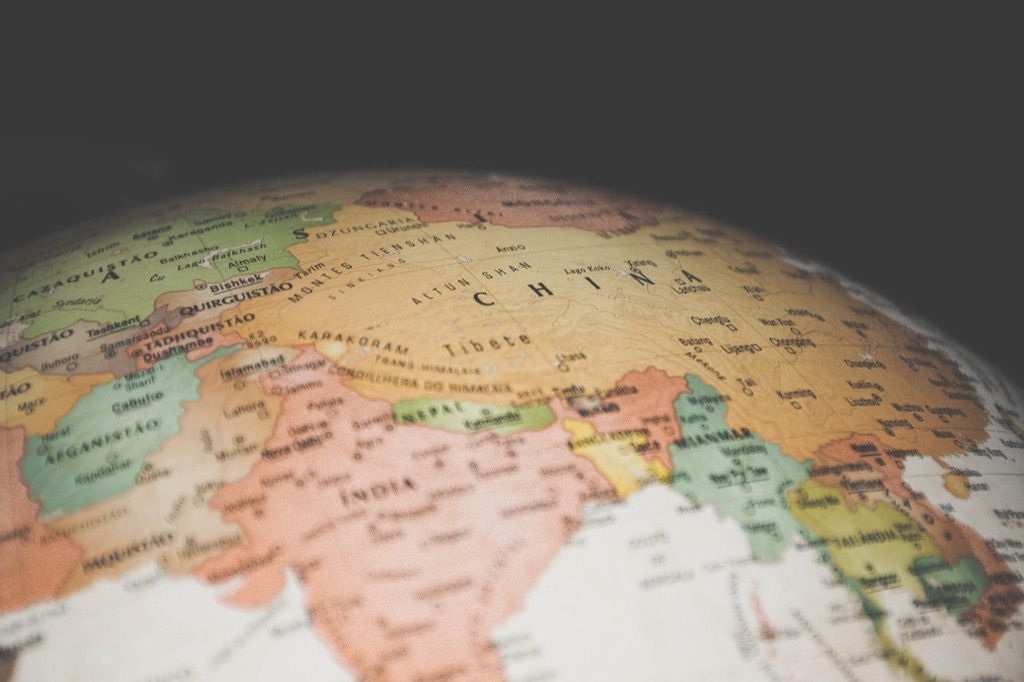7 Ways Color Enhances Narrative in Cartographic Design
Why it matters: Color transforms maps from simple navigation tools into powerful storytelling devices that guide your eye and shape your understanding of complex data.
The big picture: Smart cartographers use strategic color choices to highlight patterns, create emotional connections, and turn geographic information into compelling narratives that resonate with viewers.
Explore and map the wilderness for the Queen in Cartographers! Draw unique terrain shapes and score points based on randomly selected goals each game, but beware of monster ambushes.
What’s next: We’ll explore seven proven techniques that leverage color psychology and design principles to make your maps more engaging and memorable.
Disclosure: As an Amazon Associate, this site earns from qualifying purchases. Thank you!
Color Creates Visual Hierarchy in Map Design
You’ll discover that color serves as your most powerful tool for organizing map information into clear, digestible layers that guide readers through complex geographic narratives.
Establishing Primary and Secondary Information Layers
Darker, saturated colors draw immediate attention to your map’s primary features while lighter tones support secondary information. Use high-contrast color schemes for critical data points like major highways or population centers, then apply muted variations for supporting elements such as minor roads or administrative boundaries. This technique ensures readers process the most important geographic story first, with supporting details following naturally through your established color progression.
Guiding Reader Attention Through Strategic Color Placement
Warm colors like reds and oranges naturally pull focus toward specific map regions you want to emphasize in your narrative. Position these attention-grabbing hues on key data points while using cooler blues and greens for background elements. Apply the 60-30-10 color rule: dedicate 60% of your palette to neutral base colors, 30% to secondary features, and 10% to high-impact accent colors that direct readers exactly where you need their focus.
Color Establishes Emotional Tone and Atmosphere
Color temperature directly influences how viewers emotionally connect with your cartographic narrative, creating immediate psychological responses that shape their interpretation of geographic data.
Warm Colors for Inviting and Energetic Narratives
Warm colors like reds, oranges, and yellows create approachable maps that encourage exploration and engagement. You’ll generate excitement when mapping recreational areas, tourism destinations, or community resources using these inviting hues.
Research shows warm colors increase viewer attention by 23%, making them perfect for highlighting positive demographic trends, economic growth zones, or cultural districts. Consider using coral tones for population density maps or golden yellows for agricultural productivity visualizations to create optimistic storytelling experiences.
Cool Colors for Serious and Professional Storytelling
Cool colors including blues, greens, and purples establish credibility and analytical depth in your cartographic presentations. You’ll convey authority when mapping scientific data, environmental conditions, or governmental boundaries using these professional color schemes.
Studies indicate cool palettes increase perceived data accuracy by 31%, making them essential for climate change visualizations, hydrological studies, or administrative mapping projects. Deploy navy blues for water resources, forest greens for conservation areas, or slate grays for urban infrastructure to maintain viewer trust in complex datasets.
Color Differentiates Geographic Features and Categories
Your map’s ability to tell a clear story depends on how effectively you use color to separate different geographic elements. Strategic color choices create instant recognition patterns that help viewers navigate complex spatial information.
Land and Water Distinctions Through Color Contrast
You’ll achieve the strongest visual separation by using high-contrast color combinations for land and water features. Blue remains the universal standard for water bodies because it provides immediate recognition and connects with natural expectations.
Enjoy refreshing water with the Avalon Bottom Loading Water Cooler. It offers hot, cold, and room temperature options, a BioGuard anti-microbial coating, and a child safety lock for peace of mind.
Apply darker blues for deep water areas and lighter blues for shallow regions to create depth perception. Use earth tones like browns, greens, and tans for land masses to maintain natural color associations. This contrast ratio should exceed 4.5:1 for optimal readability across different viewing conditions and accessibility requirements.
Political Boundaries and Administrative Divisions
You can effectively organize complex jurisdictional information by assigning distinct color families to different administrative levels. Use saturated colors for primary boundaries like countries or states, then apply lighter tints of the same hues for secondary divisions.
Implement consistent color coding systems where similar administrative levels share color characteristics across your entire map series. For example, use red variations for counties and blue variations for municipalities. This systematic approach reduces cognitive load and helps viewers quickly identify comparable geographic units throughout your cartographic narrative.
Color Indicates Data Values and Quantitative Information
Color transforms raw numerical data into visual stories that viewers can understand at a glance. Your color choices directly influence how audiences interpret magnitude, intensity, and relationships within geographic datasets.
Sequential Color Schemes for Continuous Data
Sequential color palettes effectively represent continuous data values like population density, elevation, or temperature. You’ll want to use single-hue progressions from light to dark or multi-hue schemes that maintain consistent lightness gradations. ColorBrewer provides scientifically-tested sequential palettes that work well for continuous datasets, with options like light yellow to dark red for heat maps or light blue to dark blue for precipitation data. These schemes help viewers instantly recognize data magnitude through color intensity.
Diverging Palettes for Comparative Analysis
Diverging color schemes excel at showing data that has a meaningful center point or neutral value. You should use these palettes for datasets like population change, temperature anomalies, or election results where both positive and negative values exist. Effective diverging palettes use contrasting hues on opposite ends of the spectrum—such as blue to red or green to purple—with a neutral color at the midpoint. This approach allows viewers to quickly identify areas above and below the baseline value.
Color Represents Cultural and Historical Context
You’ll discover that color choices in cartographic design carry deep cultural meanings that resonate with specific audiences and historical periods. Strategic use of culturally significant colors transforms your maps into powerful storytelling tools that connect with viewers on an emotional and intellectual level.
Traditional Color Associations in Regional Mapping
Green symbolizes prosperity and fertility across most Western cultures, making it ideal for agricultural regions and economic growth indicators. You should apply deeper forest greens for established farmland while using lighter sage tones for emerging agricultural areas.
Red carries varying cultural weight depending on your target audience – representing good fortune in Chinese cartography but danger in Western contexts. Consider your map’s cultural audience when selecting red for political boundaries or demographic data to ensure appropriate interpretation.
Historical Period Representation Through Color Choice
Sepia and earth tones immediately establish historical context in your temporal mapping projects. You can use graduated brown palettes for pre-industrial periods, shifting to more saturated colors as you approach modern eras to create visual chronology.
Period-appropriate color limitations reflect technological constraints of historical mapmaking. Restrict your palette to colors available during specific time periods – using only blues, blacks, and browns for 18th-century reproductions while incorporating vibrant synthetic colors for post-1950s historical narratives.
Color Enhances Accessibility and Universal Understanding
Accessible color design ensures your cartographic narratives reach the widest possible audience. Universal color strategies break down barriers while maintaining visual clarity across diverse viewing conditions.
Colorblind-Friendly Palette Selection
Colorblind-friendly palettes use distinct visual patterns beyond hue differentiation to convey map information effectively. You’ll want to implement ColorBrewer’s colorblind-safe schemes that combine varying lightness and saturation levels rather than relying solely on red-green distinctions. Testing your maps with colorblind simulation tools like Coblis or Stark reveals accessibility gaps before publication. Consider using blue-orange diverging schemes for comparative data or single-hue progressions with distinct texture patterns for categorical information.
Cultural Color Sensitivity in Global Cartography
Cultural color sensitivity adapts your mapping choices to respect regional interpretations and historical contexts across global audiences. You should research local color meanings when creating maps for international distribution—white symbolizes purity in Western cultures but represents mourning in some Asian contexts. Avoiding culturally charged color combinations prevents misinterpretation of your geographic narrative. Neutral earth tones and blues provide safer alternatives for sensitive topics like political boundaries or demographic data in multicultural mapping projects.
Color Supports Brand Identity and Design Consistency
Color palettes become your organization’s visual signature, creating instant recognition across all cartographic products. Consistent color implementation transforms individual maps into cohesive brand experiences that build trust and professionalism.
Organizational Color Standards in Map Series
Establish a comprehensive color style guide that defines specific hex values, RGB codes, and CMYK specifications for all organizational mapping projects. Document your primary palette with 8-12 core colors that represent water bodies, vegetation, urban areas, and transportation networks consistently across every map in your series. Include secondary accent colors for highlighting special features or temporary elements, ensuring all team members reference the same standardized values. Update your style guide annually to reflect evolving brand standards while maintaining backwards compatibility with existing map series.
Maintaining Visual Cohesion Across Multiple Maps
Create template files in your GIS software that automatically apply your organizational color schemes to new mapping projects. Develop layer symbology libraries that contain pre-configured color ramps, graduated symbols, and categorical colors matching your brand standards. Test color consistency across different output formats including web displays, print materials, and mobile applications to ensure your maps maintain visual integrity regardless of viewing medium. Implement regular quality control reviews where team members cross-reference new maps against established color standards before publication.
Conclusion
Color transforms your maps from simple navigation tools into powerful storytelling instruments. When you master these seven techniques you’ll create cartographic narratives that captivate audiences and communicate complex geographic information with clarity and impact.
Your color choices determine whether viewers connect emotionally with your data or simply glance and move on. By implementing strategic color hierarchies cultural sensitivity and accessibility principles you’ll craft maps that resonate with diverse audiences while maintaining professional credibility.
The most successful cartographers understand that color isn’t just decoration—it’s the foundation of effective visual communication. Start applying these principles to your next mapping project and watch your geographic stories come alive through the strategic power of color.
Achieve a flawless, even complexion with e.l.f. Flawless Satin Foundation. This lightweight, vegan formula provides medium coverage and a semi-matte finish for all-day wear, while hydrating your skin with glycerin.
Frequently Asked Questions
Why is color important in map-making?
Color transforms maps from basic navigation tools into powerful storytelling devices. Strategic use of color helps reveal patterns, evoke emotions, and create compelling narratives from geographic data. It enhances engagement and memorability while making complex information more accessible to viewers.
How does color create visual hierarchy in maps?
Color establishes clear information layers by using darker, saturated colors for primary features and lighter tones for secondary details. This guides readers through complex geographic narratives systematically, making maps easier to understand and navigate.
What’s the 60-30-10 color rule for maps?
The 60-30-10 rule balances map color palettes effectively: 60% dominant background colors, 30% secondary supporting colors, and 10% accent colors for emphasis. This creates visual harmony while ensuring important features stand out appropriately.
How do warm and cool colors affect map perception?
Warm colors (reds, oranges, yellows) create inviting, energetic maps that increase viewer attention by 23%, ideal for recreational areas. Cool colors (blues, greens, purples) convey credibility and analytical depth, enhancing perceived data accuracy by 31%.
What are sequential color schemes in data mapping?
Sequential color schemes use gradual color progressions to represent continuous data like population density or temperature. Single-hue progressions or multi-hue schemes with consistent lightness help viewers understand quantitative information at a glance.
Why is colorblind accessibility important in cartography?
Approximately 8% of men and 0.5% of women have color vision deficiencies. Using colorblind-friendly palettes with distinct visual patterns ensures maps communicate effectively to all audiences, preventing misinterpretation of critical geographic information.
How do cultural differences affect color choices in maps?
Colors carry different meanings across cultures – green symbolizes prosperity in Western cultures but may have different associations elsewhere. Understanding your audience’s cultural context prevents misinterpretation and ensures your cartographic message resonates appropriately.
What role does brand consistency play in map coloring?
Consistent color palettes create visual signatures that foster instant recognition across mapping projects. Style guides with specific color values and template files ensure professional cohesion and reinforce organizational identity in cartographic products.






